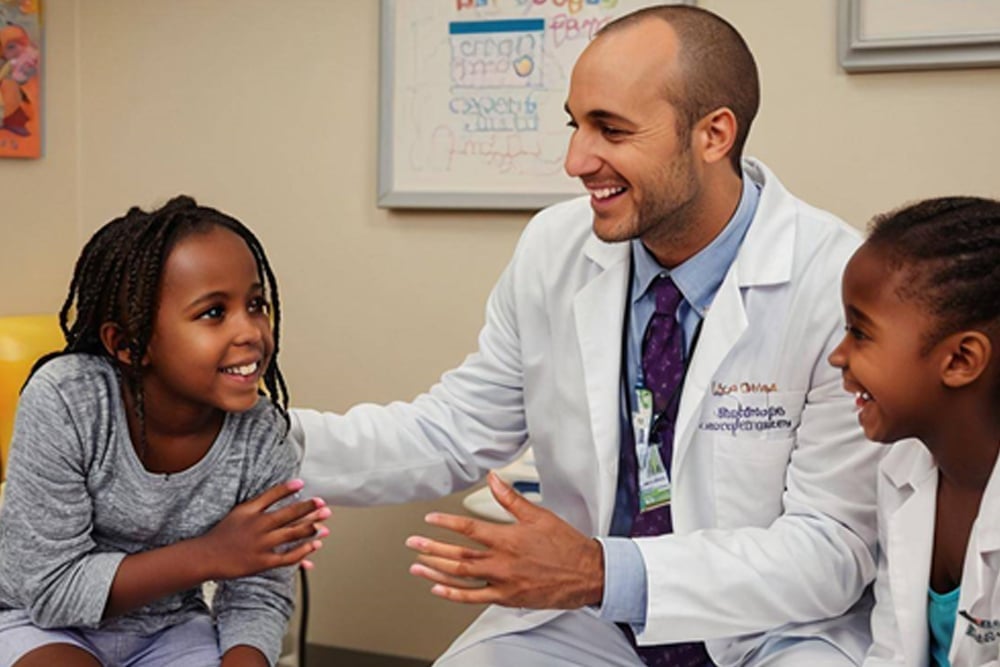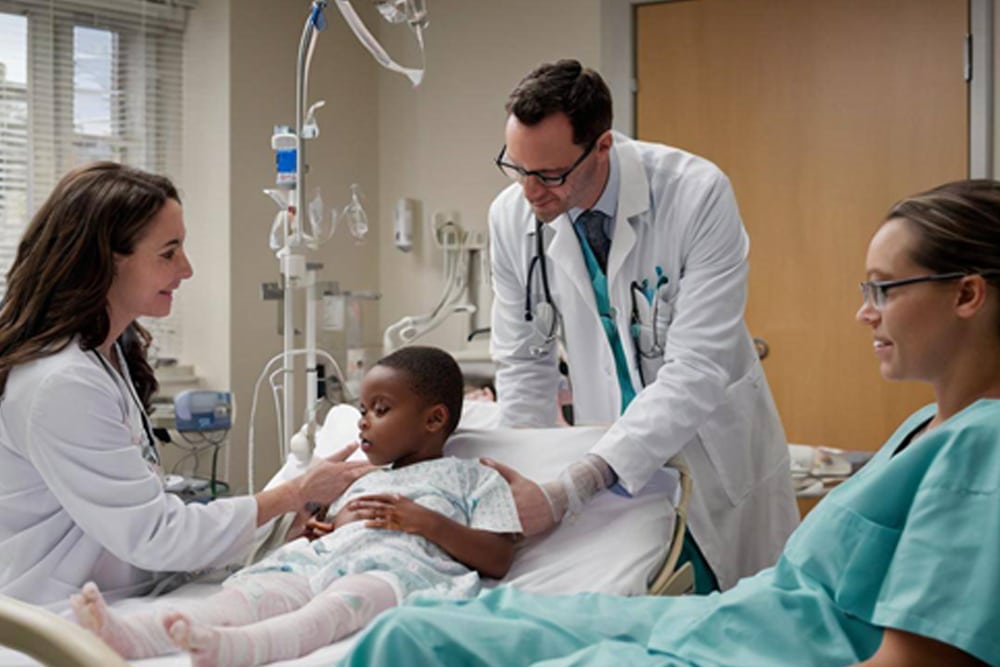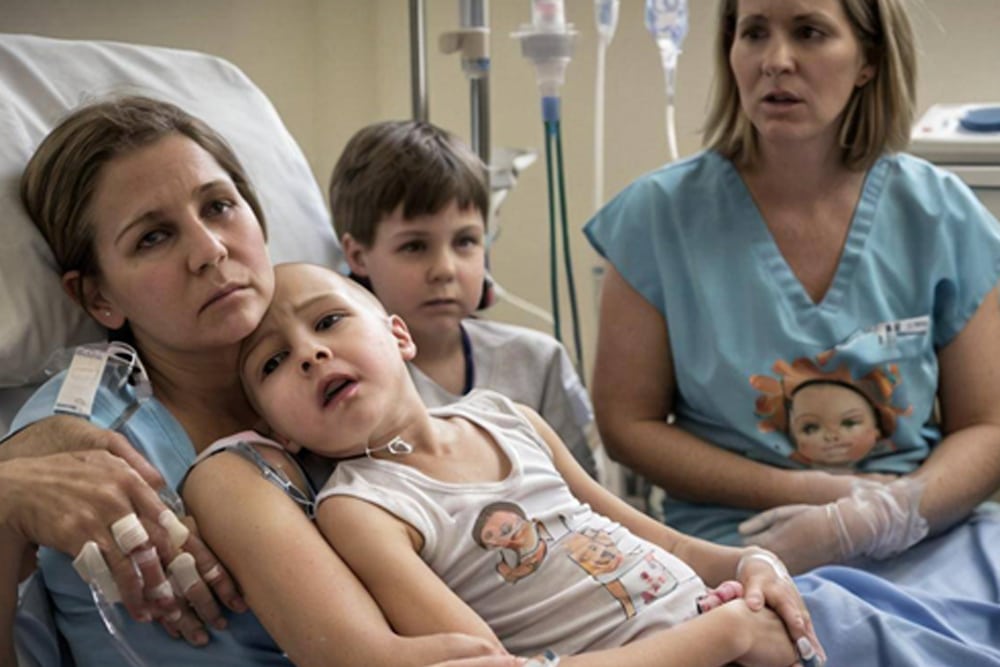Misdiagnosis of Childhood Cancers: Special Considerations and Implications
Misdiagnosis of childhood cancers is a complex issue with wide-reaching consequences. It's often tied to the subtlety of symptoms that resemble common ailments, making accurate detection a challenge for even seasoned health professionals. Unusual fatigue or a persistent fever might be dismissed as a simple cold, causing precious time to be lost. Parents' fright at their child's suffering can also cloud judgement, contributing to delayed identification. Like navigating through a dense fog at sunrise, the path to correct diagnosis isn't always clear cut. Yet, progress inches forward, one step at a time. Delving deeper reveals more of this intricate puzzle.
The misdiagnosis of childhood cancers requires special consideration due to the early symptoms being mistaken for common injuries or illnesses. Parents should pay close attention to unusual signs and chronic symptoms such as persistent fever, tendency to bruise easily, unusual lumps or swellings, and specific types of cancer predisposed by genetic factors. Consulting a paediatrician for additional screenings, imaging tests, or biopsies is recommended for families with concerns about their family history. These considerations can help in early detection and improve survival rates for children with cancer.

The Challenges of Diagnosing Childhood Cancers
Imagine trying to solve a puzzle with half of the pieces missing, and the other half could fit in multiple places. This gives you an idea of what it's like to diagnose childhood cancers. Unlike adult cancers, childhood cancers are rare, making them harder to identify. The symptoms can be quite vague and easily mistaken for more common childhood illnesses or injuries. Persistent fever, unexplained lumps, and fatigue, which can signal a potential issue, may often be attributed to less critical causes.
Moreover, children might find it hard to explain how they're feeling. They may not know how to put their pain or discomfort into words, making it tough for healthcare providers to figure out what's wrong. For instance, something as simple as a young child complaining about a tummy ache could be a sign of something much more serious. That’s why one of the biggest challenges doctors face is decoding these vague and non-specific symptoms to determine whether they point towards something more severe.
Consider a child going through extreme tiredness. Now, fatigue might seem like part and parcel of growing up, especially if the child is involved in active play or sports. However, it could also be indicative of leukaemia or another type of cancer affecting the bone marrow.
These elusive symptoms often result in delayed diagnosis and treatment. What might start as a minor cause for concern can quickly snowball into something much more serious if it goes undetected for too long. Sadly, this delay can significantly impact the prognosis and overall well-being of the child.
So you see, physicians encounter multifaceted challenges in diagnosing childhood cancers. From the rarity of these diseases to the vague symptoms that mirror common childhood issues, addressing these hurdles requires a keen understanding and great care when dealing with paediatric patients.
Understanding the challenges is just one piece of the puzzle. Now, let's delve into how misdiagnosis occurs in childhood cancers.
How Misdiagnosis Occurs in Childhood Cancers
Misdiagnosis is more than just a possibility; it's a real concern when it comes to childhood cancers. There are several factors that can lead to the misinterpretation of symptoms and ultimately delay the correct diagnosis and treatment. Let's explore some of these factors and how they contribute to misdiagnosis.
Symptom Overlap
One of the significant issues leading to misdiagnosis is the overlap of symptoms between childhood cancers and other less serious conditions. Take leukaemia, for example, which can often be misinterpreted as general infections or flu-like illnesses due to common symptoms like fever, fatigue, and bruising. These symptoms can easily be mistaken for something less severe, causing a delay in the proper diagnosis.
Similarly, brain tumours can present symptoms such as headaches and vomiting, which might initially be attributed to migraines or stomach bugs. In these instances, it's easy for healthcare professionals to misinterpret the early signs of cancer as something less serious, resulting in delayed intervention.
Lack of Awareness
Another contributing factor to misdiagnosis is the limited exposure some healthcare providers have to paediatric oncology. Childhood cancers are rare compared to adult cancers, so not all medical professionals have extensive experience in recognising specific symptoms and signs associated with them. This lack of experience can lead to symptoms being overlooked or misinterpreted.
Additionally, the rarity of childhood cancer might lead some healthcare providers to underestimate the possibility of it occurring, further complicating the diagnostic process. Consequently, this lack of awareness and experience can significantly contribute to the delay in accurate diagnosis and appropriate treatment.
Diagnostic Errors
Mistakes in interpreting test results also play a crucial role in contributing to misdiagnosis in childhood cancers. Imaging scans such as MRIs and x-rays, along with biopsies, provide essential information for diagnosing cancer. Errors or oversights in these tests could lead to a false impression of a child's health status.
For instance, a misread radiology report might initially dismiss abnormalities that should be further investigated. Similarly, errors in performing or analysing biopsies can result in crucial information being overlooked or misinterpreted, ultimately affecting the accuracy of diagnosis.
The full comprehension of how misdiagnosis occurs in childhood cancers is central to understanding the complexities involved in accurately identifying and treating these conditions. By examining these factors, we gain insight into the challenges that healthcare professionals face when dealing with paediatric oncology cases.
Moving forward, we will explore the critical role played by specialists in detecting and diagnosing childhood cancers.
Role of Specialists in Diagnosing Childhood Cancer
When it comes to diagnosing childhood cancer, paediatric oncologists are at the forefront. These experts possess a wealth of knowledge and experience in identifying the distinct signs and symptoms associated with paediatric cancers. Their extensive training enables them to conduct comprehensive evaluations, interpret test results accurately, and recommend customised treatment plans that are tailored to each child's unique medical requirements.
Paediatric oncologists understand the complexities and nuances of childhood cancers, including the differences in how these diseases manifest and progress compared to those in adults. Their specialised expertise allows them to navigate the intricacies of diagnosing and treating paediatric cancers, ensuring that young patients receive the best possible care. Moreover, paediatric oncologists also play a critical role in coordinating multidisciplinary teams composed of various healthcare professionals, such as paediatric surgeons, radiation oncologists, pathologists, and other specialists. This collaborative approach ensures that every aspect of a child's cancer diagnosis and treatment is thoroughly considered and carefully managed.

Ensuring Accurate and Timely Diagnoses
Access to paediatric oncologists is essential for ensuring accurate and timely diagnoses. Given their deep understanding of childhood cancers, these specialists are well-equipped to identify subtle indicators that may point towards the presence of cancer. By conducting meticulous evaluations and leveraging their in-depth knowledge, paediatric oncologists can arrive at precise diagnoses, enabling prompt initiation of appropriate treatments. They also remain attuned to the potential challenges associated with diagnosing childhood cancer. They recognise the diverse range of symptoms that may present in young patients and are adept at distinguishing between malignant conditions and more common childhood illnesses. This acute discernment is instrumental in preventing misdiagnosis and ensuring that children receive the care they need without undue delay.
Families whose children are suspected of having cancer often find solace in the expertise and compassion provided by paediatric oncologists. These specialists strive to collaborate closely with parents or guardians to address concerns, explain medical processes clearly, and offer support throughout the diagnostic journey.
For instance, a child experiencing unexplained and persistent symptoms such as unrelenting pain, unusual lumps or swelling, prolonged fever without an obvious cause, or unexplained weight loss may raise suspicions for a paediatric oncologist. In such cases, these professionals undertake meticulous assessments involving detailed medical histories, physical examinations, imaging studies, and laboratory tests to uncover potential underlying malignancies.
In essence, paediatric oncologists are vital advocates for children affected by cancer. Their specialised insights and dedicated approach significantly contribute to achieving accurate diagnoses and facilitating timely interventions that can improve outcomes for young patients battling cancer.
As we navigate through the multifaceted landscape of childhood cancer diagnoses, it becomes crucial to comprehend the grave implications that arise from misdiagnoses.
Implications of Misdiagnosis
The implications of misdiagnosis in childhood cancers are profound, impacting the child's treatment, prognosis, and overall quality of life.
Delayed Treatment
Misdiagnosis of childhood cancer can result in significant delays in commencing appropriate treatment. These delays can allow the cancer to progress to advanced stages, making it more challenging to treat successfully. Early detection and treatment are crucial for improving survival chances, and misdiagnosis impedes this critical aspect, affecting the child's prospects of overcoming the disease.
In some cases, what may have started as a relatively localised tumour requiring surgical removal could progress to a stage where the cancer has spread to other parts of the body. This progression may necessitate more aggressive treatment modalities, such as chemotherapy or radiation therapy, which could have been avoided with an accurate and timely diagnosis.

Unnecessary Interventions
Misdiagnosis not only results in delayed treatment but also exposes the child to unnecessary interventions. When a child is misdiagnosed with cancer, they may undergo invasive procedures, chemotherapy, or other treatments for conditions they do not actually have. These unnecessary interventions pose physical risks to the child and inflict emotional distress on both the child and their family. It's crucial to avoid subjecting children to these traumatic experiences by ensuring accurate and timely diagnoses.
Furthermore, unnecessary treatments can have long-term consequences on the child's health and development, potentially impacting their overall well-being beyond the immediate treatment phase.
Impact on Prognosis
The impact of misdiagnosis on a child's prognosis cannot be overstated. A delay in accurate diagnosis and appropriate treatment significantly affects a child's long-term survival rates and quality of life. The failure to promptly address the true nature of the condition can lead to complications and disease progression.
Unforeseen consequences brought about by misdiagnosis may result in an altered treatment plan or suboptimal management strategies, subsequently influencing a patient's long-term outlook. Misdiagnosis can introduce uncertainty into the course of treatment and may necessitate adjustments that impact recovery and post-treatment care.
It's evident that misdiagnosis in childhood cancer cases carries severe implications that extend far beyond the initial diagnostic error, emphasising the critical need for accurate and timely identification of paediatric malignancies.
Now, let's shift our focus to exploring special considerations when it comes to testing and treatment for childhood cancers.
Testing and Treatment: Special Considerations
When it comes to childhood cancers, special considerations must be considered to ensure that testing and treatment plans are tailored specifically for young patients. This is crucial for providing accurate diagnosis and effective treatment while minimising any potential harm.
Specialised Imaging
Children's bodies are distinct from adults', requiring specific imaging tests designed with their unique needs in mind. These specialised imaging tests not only aid in accurately diagnosing childhood cancers but also play a vital role in planning the best course of treatment. More importantly, they are tailored to minimise radiation exposure, considering the long-term impact on a child's developing body.
Paediatric-specific imaging techniques often use lower radiation doses compared to standard adult imaging, such as utilising ultrasound instead of CT scans when appropriate. By customising imaging based on a child's size and medical condition, these techniques allow for accurate diagnosis while mitigating potential risks associated with radiation exposure.
Tailored Treatment Plans
Just as children are not small adults, their treatment approaches should reflect this understanding. Customised treatment plans based on a child's age, overall health, and the specific type and stage of cancer are essential. Paediatric oncologists work closely with other specialists in a multidisciplinary approach to formulate these individualised plans.
Furthermore, since children's bodies are continuously developing, there's a unique emphasis on preserving their long-term health when crafting treatment strategies. This can include utilising targeted therapies to minimise potential side effects and long-term impact on growth and development.
Advocate for the Best Care Families facing childhood cancer must advocate for their child's care by seeking out specialised centres with experience in treating paediatric cancers. Accessing such centres increases the chances of receiving highly tailored care in line with the latest advances in paediatric oncology.
In essence, when dealing with childhood cancer, it is imperative to approach testing and treatment with specialised consideration for each young patient's unique physical and developmental needs. By tailoring imaging techniques and treatment plans accordingly, we stand a better chance of providing accurate diagnoses and effective treatments while prioritising the overall well-being of these brave young individuals.
The journey to improving childhood cancer outcomes involves not only specialised consideration but also proactive measures aimed at early detection and awareness. Let's now shift our focus towards exploring how promoting early diagnosis can pave the way for better outcomes for these young fighters.
Promoting Early Diagnosis and Awareness
When it comes to childhood cancers, early diagnosis truly makes all the difference. The sooner a child receives a diagnosis, the sooner they can start the appropriate treatment, significantly improving their chances of recovery. But how do we ensure early detection? Education and awareness are key.
Parents, caregivers, and healthcare providers need to know what signs and symptoms to watch out for. Sometimes these can be quite subtle and easily mistaken for common childhood illnesses. That's why it's crucial to shine a light on these indicators through educational initiatives and awareness campaigns. These may include informative materials, webinars, workshops, or community events that help spread knowledge about the symptoms of childhood cancers.
Just like with any issue, awareness is key. For example, if you see a road sign warning of a bump ahead, you slow down and prepare to navigate it carefully. In the same way, when parents and caregivers are aware of the potential signs of childhood cancer, they can be alert and take necessary action.
Furthermore, efforts need to go beyond just informing parents and caregivers. Healthcare providers also play a critical role in early diagnosis. They need to receive regular education and updates on recognising potential indicators of childhood cancer. This can help ensure that any concerning symptoms are evaluated promptly and thoroughly.
There are successful models of such initiatives around the world where information sessions, training programmes, or even simple brochures have been used to raise awareness among communities.
According to the World Health Organisation (WHO), creating national cancer control programmes that incorporate strategies specifically targeting childhood cancer is crucial in promoting early diagnosis and management in children.
By fostering awareness through education across stakeholders - from parents and caregivers to healthcare providers - we can empower them to recognise the potential signs of childhood cancers and seek prompt evaluation and diagnosis leading to better prognosis for the affected children.
Early detection is undeniably linked to improved outcomes for children with cancer. By emphasising education and awareness at all levels, we can make strides in ensuring that no potential sign goes unnoticed, ultimately saving lives.
Get a Consultation Today! - Call us now at 01 5134687
Gary Matthews Solicitors
Medical negligence solicitors, Dublin
We help people every day of the week (weekends and bank holidays included) that have either been injured or harmed as a result of an accident or have suffered from negligence or malpractice.
Contact us at our Dublin office to get started with your claim today

